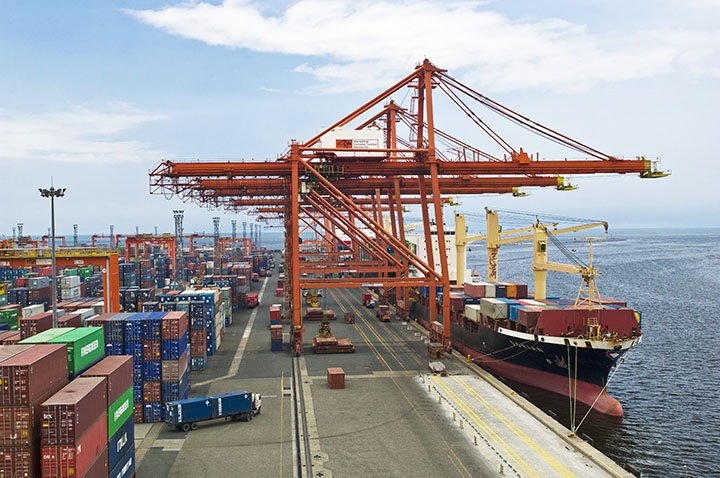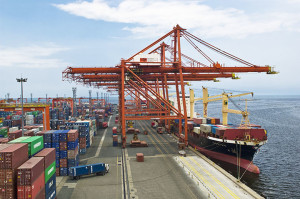

Port operators are confident that Manila’s international terminals will be able to sustain more ideal yard utilization levels in the coming months even if cargo volume picks up, stating that decongestion measures have started to take effect.
Andrew Hoad, executive vice president of Asian Terminals Inc., which operates the Manila South Harbor, told PortCalls in an email he expects average monthly utilization to fall below 80% for the second quarter and for most of the third quarter even as volumes grow.
“This is a normal pattern,” he added.
At the height of the port congestion middle of last year, triggered by the Manila daytime truck ban, Manila terminals were sometimes hitting yard utilization levels of more than 100%.
Hoad said “ATI has been operating a barge shuttle down to Batangas for overstayers in recent weeks, which has assisted the drop in utilization.”
ATI also operates Batangas port.
Another ATI official, vice president Sean Perez, told PortCalls in a phone interview that around 800 overstaying containers have been transferred to Batangas as part of the directive by the Cabinet Cluster on Port Decongestion (CCPD) to reduce yard utilization of terminals.
“I think the trend is very positive. The controls put in by the Cabinet Cluster have really taken effect,” Christian Gonzalez, International Container Terminal Services, Inc. (ICTSI) head for Asia, Pacific and the Subcontinent, also told PortCalls in a chance interview last week.
Cabinet Secretary Jose Rene Almendras, who heads the CCPD, on March 2 announced that operations at the Manila International Container Terminal (MICT) and South Harbor have reverted to normal and that the ports are now decongested.
Not a low season
Optimism regarding the port situation comes amid a busy February, traditionally seen as a lean month for cargo shipments due to the Chinese New Year.
February has turned into a “regular” season, described ATI’s Perez, who pointed out that South Harbor experienced higher volumes for that month.
And now he said truck movements at the terminal are around 2,300 during peak times and 1,600 during slow times, much higher than the 700 truck movements on average previously.
Higher volumes were also observed at MICT last month.
ICTSI’s Gonzalez noted, “We did more throughput per day in February this year than we ever have before,” adding that the MICT, which ICTSI operates, also handled record volumes in November and December last year and that the “whole time the utilization has been coming down.”
Were it not for the recent assorted holidays, including the five-day Papal visit in mid-January, “utilization would even be in the 60s”, the ICTSI port executive said.
But Gonzalez stressed, “The key now is again, huwag tayo maging kampante (let’s not turn complacent).”
He said stakeholders should continue to be encouraged to pull out their shipments during Sundays and avoid long storage periods inside the port. The vehicle booking system (VBS) should also be adopted.
Moreover, Gonzalez added, building capacity outside of the port should continue in order to help maintain ideal levels at the container terminals.
ATI’s Hoad also noted that congestion will be avoided in future if truck bans are not introduced, and the VBS finally implemented.
ICTSI and ATI said the VBS, which has been proposed by the two port operators even before the adoption of the Manila daytime truck ban, will be up and running by the second or third quarter of this year. – Roumina Pablo




